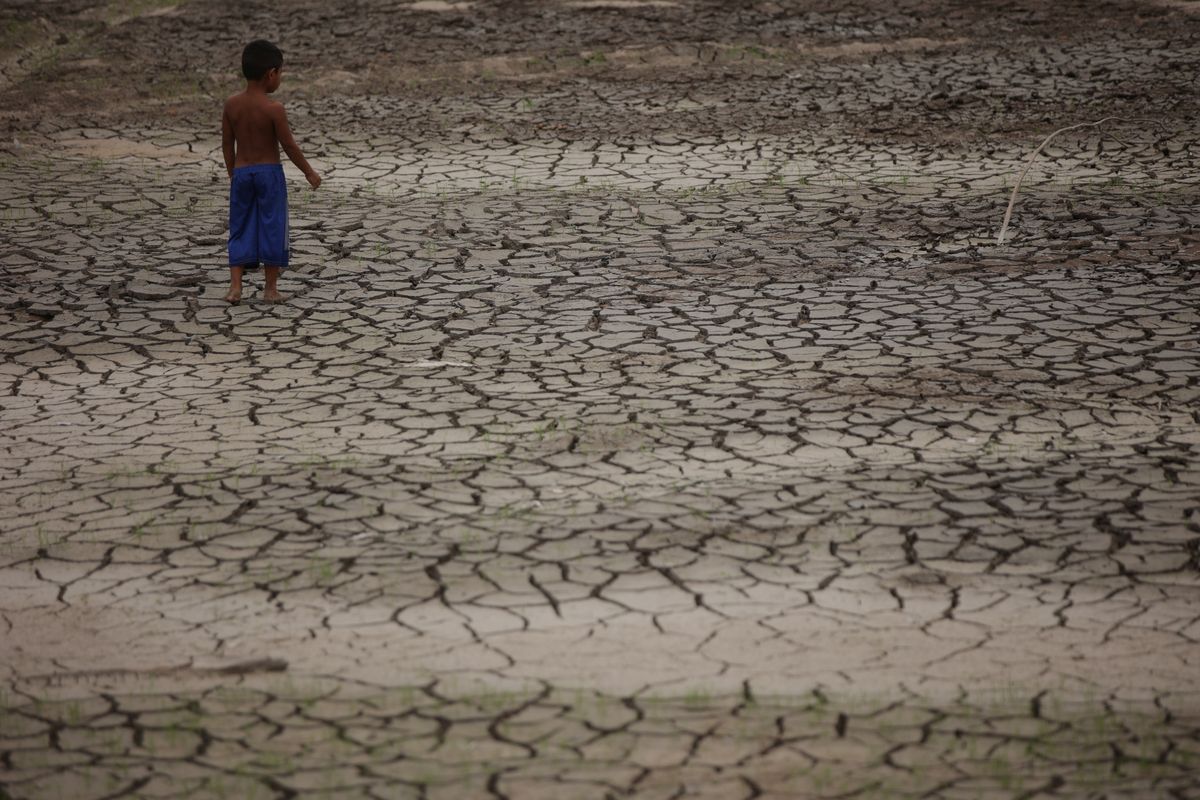The Amazon River drops to its lowest levels in a century
One-fifth of the world’s fresh water comes from the Amazon River, which flows through five countries in South America.

A few minutes every morning is all you need.
Stay up to date on the world's Headlines and Human Stories. It's fun, it's factual, it's fluff-free.
The backstory: One-fifth of the world’s fresh water comes from the Amazon River, which flows through five countries in South America – Ecuador, Colombia, Venezuela, Bolivia and Brazil. Hundreds of thousands of people in the area and the entire jungle ecosystem depend on the river to survive. It has a few main tributary rivers that converge with it to supply it with water as it flows south into the Atlantic Ocean. Around 30 million people live in the Amazon River basin and rely on it for fresh water, transportation and as a supply route.
More recently: Human-and-climate-caused deforestation and climate change-related drought and heat waves in the Amazon rainforest are leading to problems for the giant river there. It’s been about two years since parts of the rainforest have had real flooding. The Brazilian government says the drought is caused by both climate change and the El Niño weather pattern, which has messed up rainfall volume in the northern Amazon.
Tributary streams to the Amazon River have been drying up. These tributary rivers are home to animals and plants, and they’re used to transport goods and supplies to remote villages in the area. Without enough water flowing, many animals (like hundreds of river dolphins) have ended up dying. Hydropower plants in the region have also been in trouble, with a major one having to suspend operations. The tourism industry is also struggling, with river beaches sitting dry and empty.
Last month, the Brazilian government set up a task force to get food to isolated communities, but Indigenous groups say the situation has gotten worse and they need more help. Unfortunately, recent studies show that issues like climate change, deforestation and fires make it harder for the Amazon to recover from drought.
The development: On Monday, the Manaus port (where the Negro River meets the Amazon River) measured its lowest water levels since recording began in 1902. That point is at a level of 13.59 meters, dropping from last year’s 17.60. Another main tributary, the Madeira River, is also at historically low levels. Experts say that the situation will only continue to get worse as the climate crisis worsens. The rainy season is expected to start soon, but there’s a chance that things could stay relatively dry in the region.
Key comments:
“This is a catastrophe of lasting consequences,” said Luciana Vanni Gatti, a scientist at Brazil’s National Institute of Space Research who’s been studying the Amazon. “The more forest loss we have, the less resilience it has.”
"It's not very good for us because we're practically isolated," said Nelson Mendonca, a community leader in Santa Helena do Ingles.
“The forecast is for the start of the rains to be delayed compared to normal and for a drier-than-normal rainy season,” said Philip Fearnside, an American researcher at the Brazilian National Institute of Amazonian Research. “This could result not only in extreme low water this year but also low levels in 2024. Until the rainy season begins in the basin, the situation that is already underway should worsen.”




Comments ()